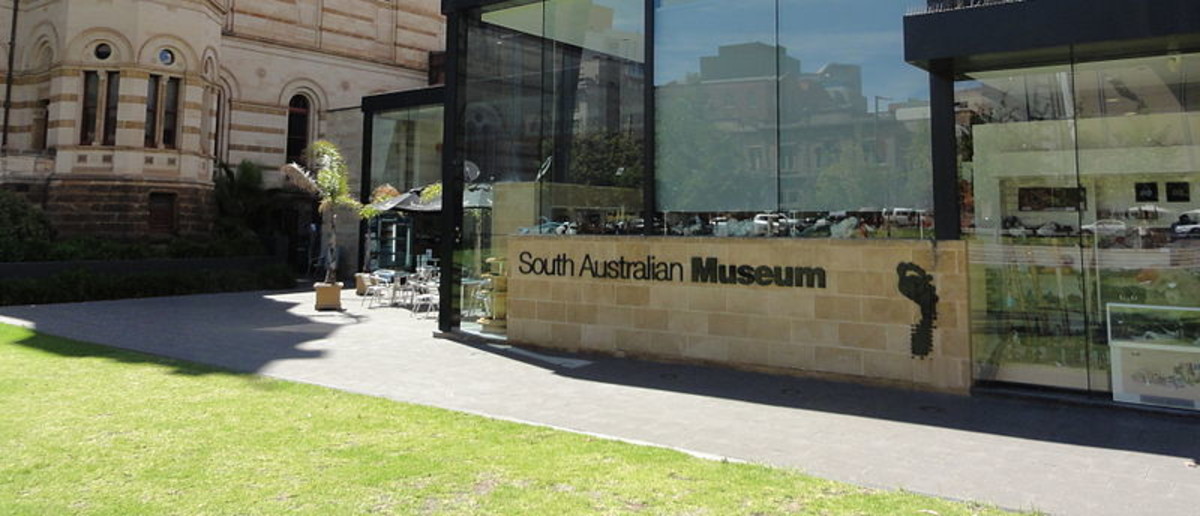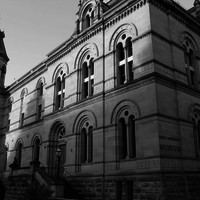The South Australian Museum is one of the several cultural institutions that line North Terrace and help to make it Adelaide's premier cultural boulevard. Like the neighbouring State Library it is housed in a collection of buildings of varying dates, but traces its origins to the early years of South Australia. The Museum houses a large collection of objects and specimens that reflect the geology and fauna of the state, and holds a very significant collection of Aboriginal cultural material which is displayed in a large gallery on the ground floor.
History
The natural world was a source of endless fascination in the nineteenth century, as expansion in the 'new worlds' exposed European naturalists and a voracious public to its 'strange' flora and fauna. Australian fauna excited particular interest. So not surprisingly, when a group of educated intending settlers set up a South Australian Literary Association in 1834, they identified 'natural science' as an area of interest. At first most of the specimens collected locally were sent to British and European collections for identification and cataloguing, but the creation of an embryo museum within the South Australian Institute in the late 1850s saw the beginnings of a local collection. The Institute was fortunate that a former employee of the British Museum had emigrated to South Australia and was working locally as a surveyor. In 1859 Frederick Waterhouse offered to be the first curator of the Institute's museum and began to build a collection in an honorary capacity. He was appointed as the first curator when the Institute Building was completed in 1861. The initial focus of Waterhouse's early collecting was birds and mammals and some of these early specimens are still preserved in the collection. The oldest specimen of mammal is a South Australian numbat, collected in 1863, but most of the early birds collected were sent overseas in exchange for exotic specimens. Interest in collecting items of Aboriginal material culture followed some decades later. While the South Australian Museum holds a very large collection of Aboriginal material, items reflecting the culture of the local Kaurna and other groups in the early years of European settlement are very rare.
Accommodating the growing collection was an on-going challenge for the Institute. In 1884 the new Jervois Wing of the Library, Art Gallery and Museum, opened to the public, with the Museum housed in the northern half, then in 1895 a 'temporary' extension to the north opened. It is still in use. A new East Wing opened in 1915. The final addition to the Museum's collection of buildings was a new natural science building, built in the mid-1980s and located behind the State Library on Kintore Avenue. The Museum also has functions in the historic Police Barracks and Armoury buildings located to the rear of the main North Terrace frontage.




Add your comment